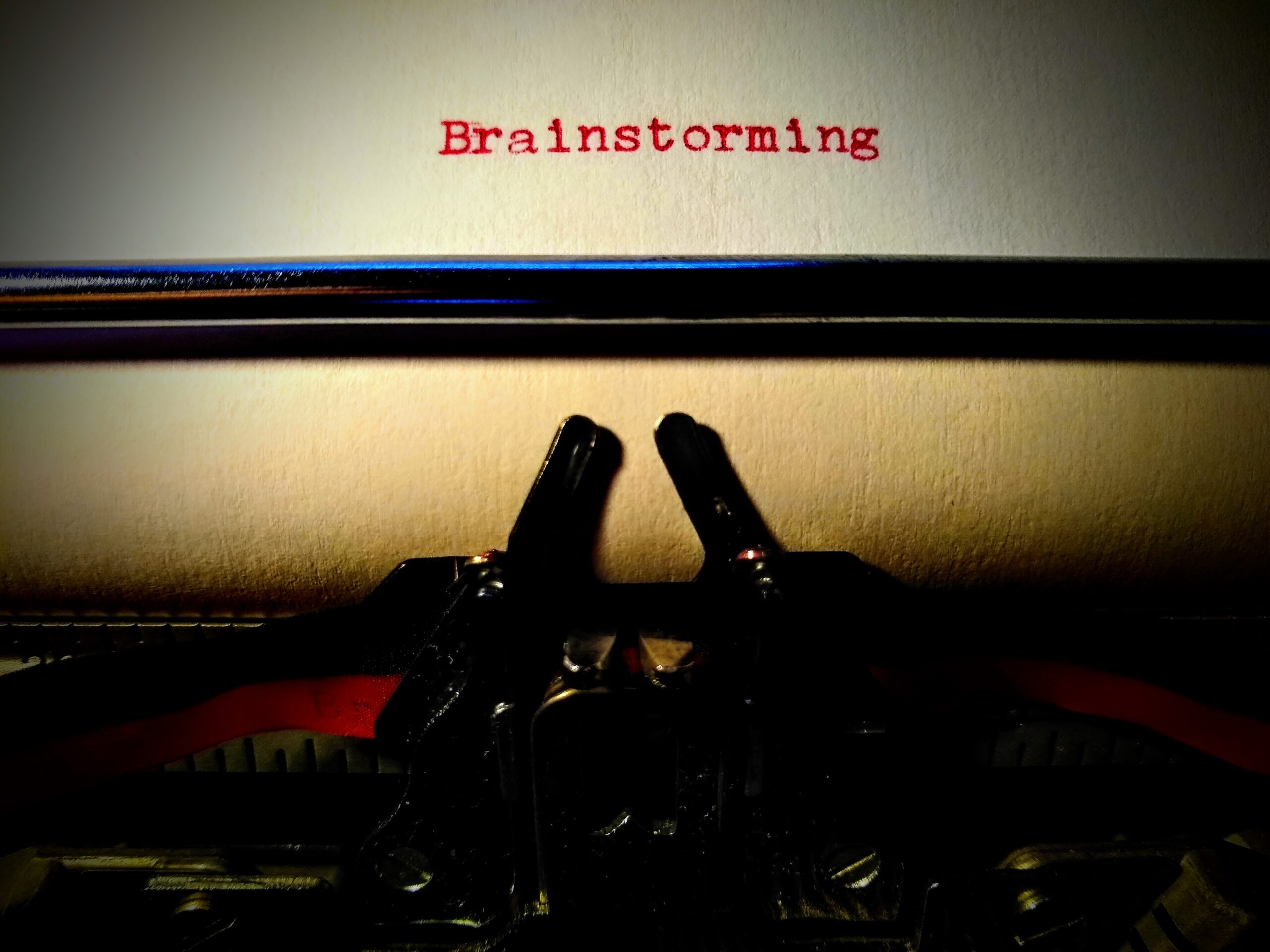
Inevitably I’ll get to a point in my story where things are boring me, the events aren’t logical in the greater context of the story, or something seemed like a good idea at the time but is no longer working (or all three!).
Or I’ll be doing a read-through of my latest draft and there will be things that rip me right of the story, usually because I ignored them along the way because I knew they’d take some heavy lifting.
That’s when I turn to brainstorming to work it out.
Brainstorming. Blecch. Just the word conjures images of boring (or terrifying) meetings where people are afraid to “just say anything that comes to mind” for fear of being ridiculed, dismissed or rejected.
Sounds fun, right?

Try thinking of it more in a child-like context, like kindergarteners in a big circle and the teacher asks for ideas. Kids have no problem shouting out what immediately comes to mind. Approach brainstorming with the kindergartener mindset (sans other kids and teacher) and ideally much of the trepidation fades.
If you’re still unsure just know you can brainstorm in private at your keyboard. Also, brainstorming is just writing down words. If you have to make some bad ones to get to the good ones, no problem, you’re a writer. That’s what you do.
In my experience, effective brainstorming requires two things:
- Being willing to keep writing and exploring
- Being open to possibilities
The first one isn’t too hard, you just have to get out of your own way. No one’s watching you and no one’s judging you. If you’re stuck on notions that “this isn’t what real writers do” that’s completely natural, but misguided. If you’ve read anything about how writers work, you know there are myriad ways to get to a finished piece.
The best part about just puking words onto a page is if you keep at it long enough, your mind starts to make connections between the work you’ve already done and these new ideas. Maybe some cause and effect stuff starts to surface or maybe a character’s motivation becomes clearer or, one of my favorites, you discover a way to take previously unrelated events or characters or settings and elegantly tie them together.
That’s when your story elevates from a string of events that don’t rely on each other to a string of events that can’t happen without what’s come before. Think of it as the equivalent of tightening the threads of your story, creating a denser, more satisfying tapestry.
For all this to work, however, you need to be open to possibilities such as:
- Arriving at an idea that requires significant re-work
- Uncovering an idea that changes how you think about your story, your characters, your setting, and so on.
- Coming up with a satisfying solution may take longer than you want.
- The solution that works best may take several tries.

Writing (especially revising) is a lot like a DIY project at home. To fix one thing, you need to actually fix three. You think you’re putting in a new sink, but it turns out there was a slow leak and now your cabinet is crumbling and the subflooring is spongey. Hooray! Three projects instead of one! Five times as long to get to done.
By nature we are resistant to start pulling apart something we’ve spent a lot of time creating. And we’re often precious about work we’ve already done. Hours upon hours of it!
But, but, but! If you’re willing to get roll up your sleeves and get in there the end result will be much more satisfying when your done.
Besides, you can always save what you wrote before. In fact, I would suggest you do and then compare it to your new attempt. Chances are you’ll like the newer effort more. And if not? Try again.
Using sense of wonder, emotion and excitement as your guide can help you identify those things worth trying. If you’re bored with the solutions you’ve got so far, you’ll probably be bored writing them. Keep going until you feel that spark. Even if it’s not the final path forward, there’s a good chance you’re at least going in the right direction.
